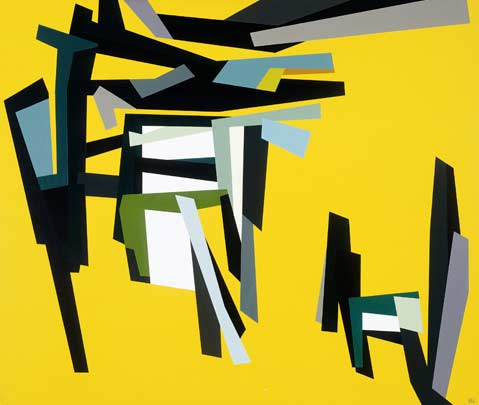SBMA Unveils Part One of California Calling
New Exhibit Features Left Coast Art from Last 60 Years

The Santa Barbara Museum of Art continues to express the distinctive vision and character of the California art scene with this important show of postwar works from the museum’s permanent collection and private collections in Santa Barbara. In an era of highly conceptualized group shows and historically oriented retrospectives, it’s a joy to encounter California Calling. Walking through it is like getting a brilliant mix tape from a good friend. Filled with big hits and rare B-sides, it’s a collection that makes you want to turn up the volume. Fortunately, California Calling is a double album-there is a second installment coming in September.
The revelations here are multiple, but they all revolve around a simple fact-California was the less heralded “off-center” of American art during the supposedly New York-dominated second half of the 20th century. In addition to highlighting what Californians accomplished in relation to the art world at large, the show also makes a strong case for Santa Barbara as crucial to the production and presentation that made California art in this period so exciting. For info, call 884-6454 or visit sbma.net. Here are four reasons to check out California Calling:
1) The Roots of Modern Santa Barbara Style: Contributions by Channing Peake and William Dole reveal the fine art origins of our community’s collective visual identity. In “Mexican Courtyard” (1952), Peake sets the arches of Spanish Colonial architecture dancing, and thereby lets a thousand styles bloom. In a series of three landscape collages from 1959-1961, Dole integrates the Dadaism of Kurt Schwitters with the plein air sensitivity to light and atmosphere of Ray Strong. The result is a potent cocktail of old and new dreams.
2) To Re-Meet the Great Painters of the L.A. School: Billy Al Bengston and Ed Moses both have great pictures in California Calling. As time goes on, these two masters of the collision of abstraction and pop come to seem more essential. The Moses painting, “Untitled (LAL)” from 1985, anchors the room with his remarkable blend of visual intelligence and street cred.
3) To See the Light: Fitting in a state saturated with sunshine and celluloid, there are several works on view that help one to love our daily dazzle. Nathan Oliveira’s giant “Swiss Site #6” (1979), for instance, overflows with a big pink cloud of Guston-y illumination.
4) To Inhabit Every Dimension: In their own way, Fred Eversley, Peter Voulkos, Robert Arneson, and Carter Potter ask us to step into the open space beyond the picture plane.



